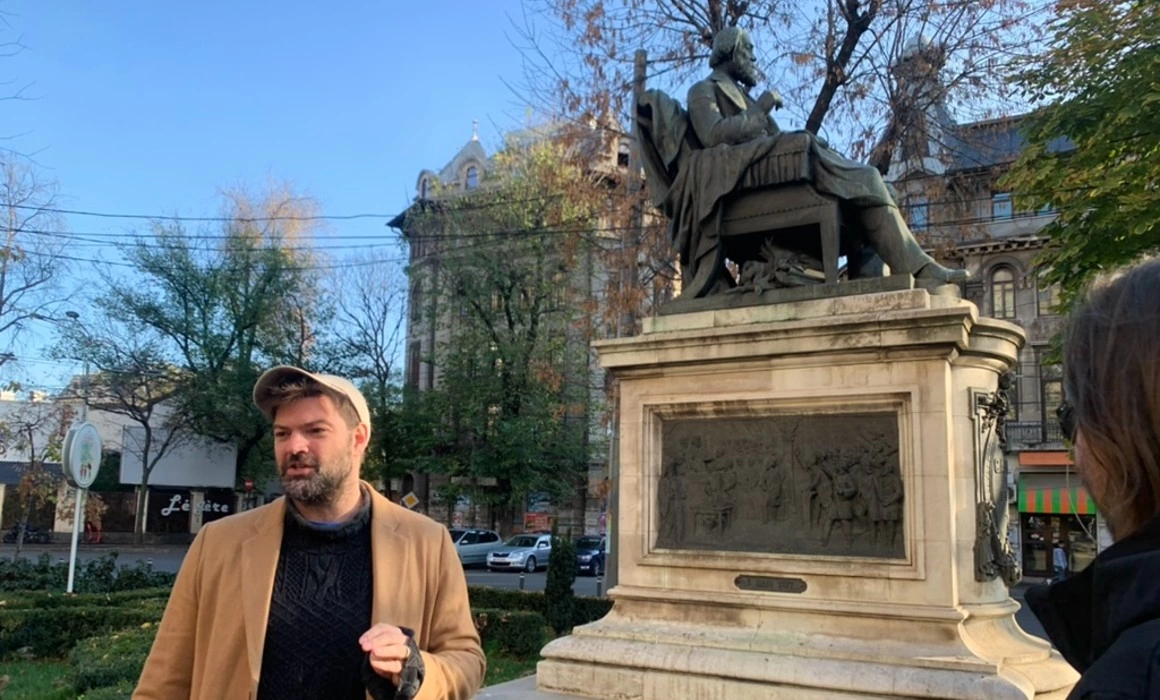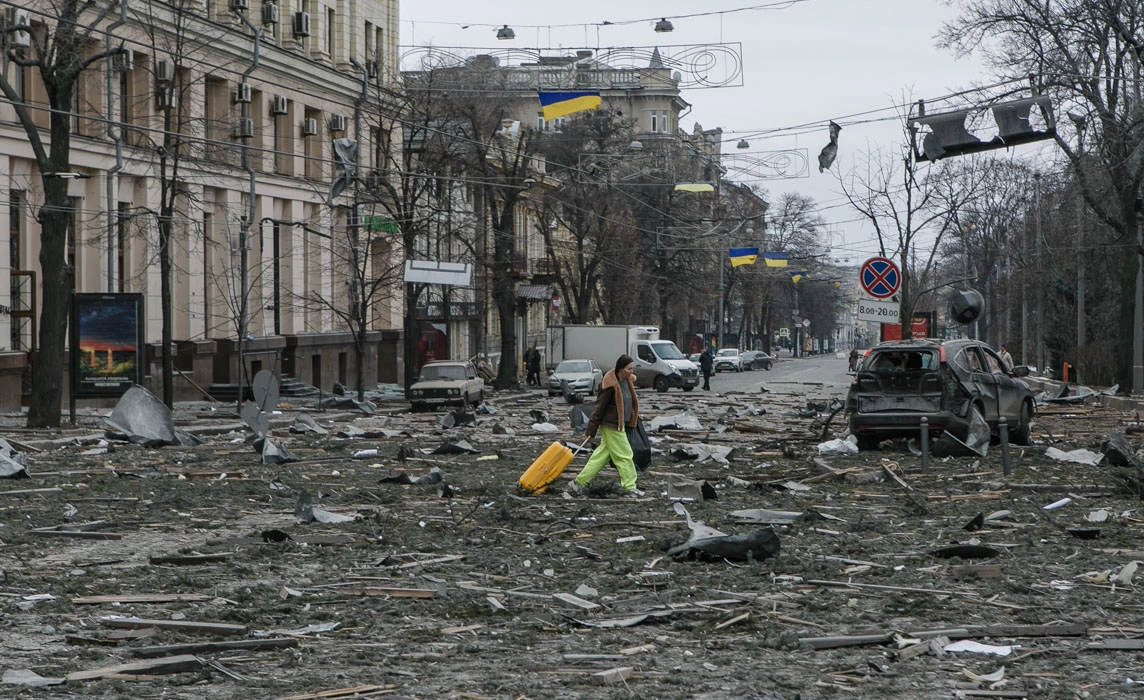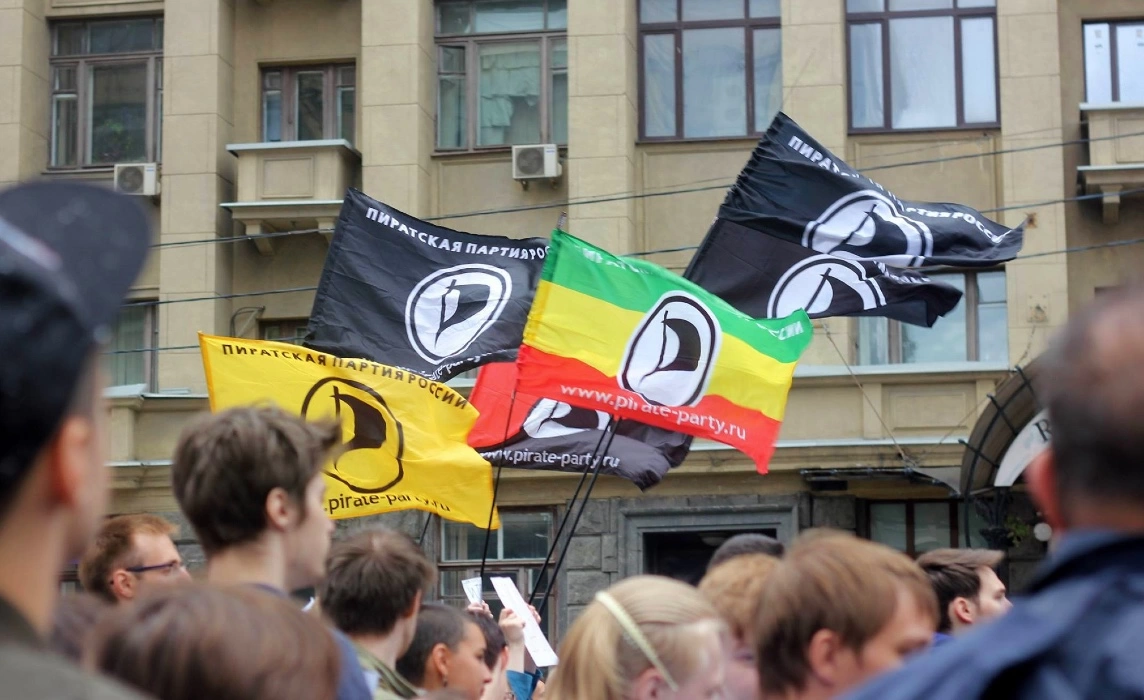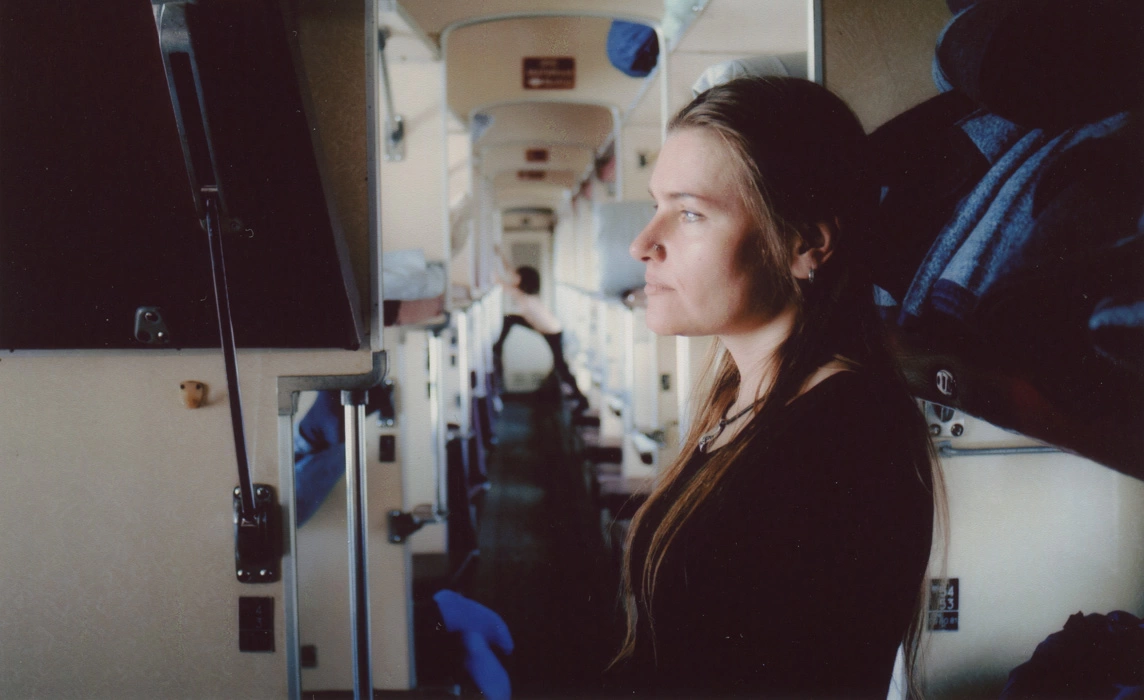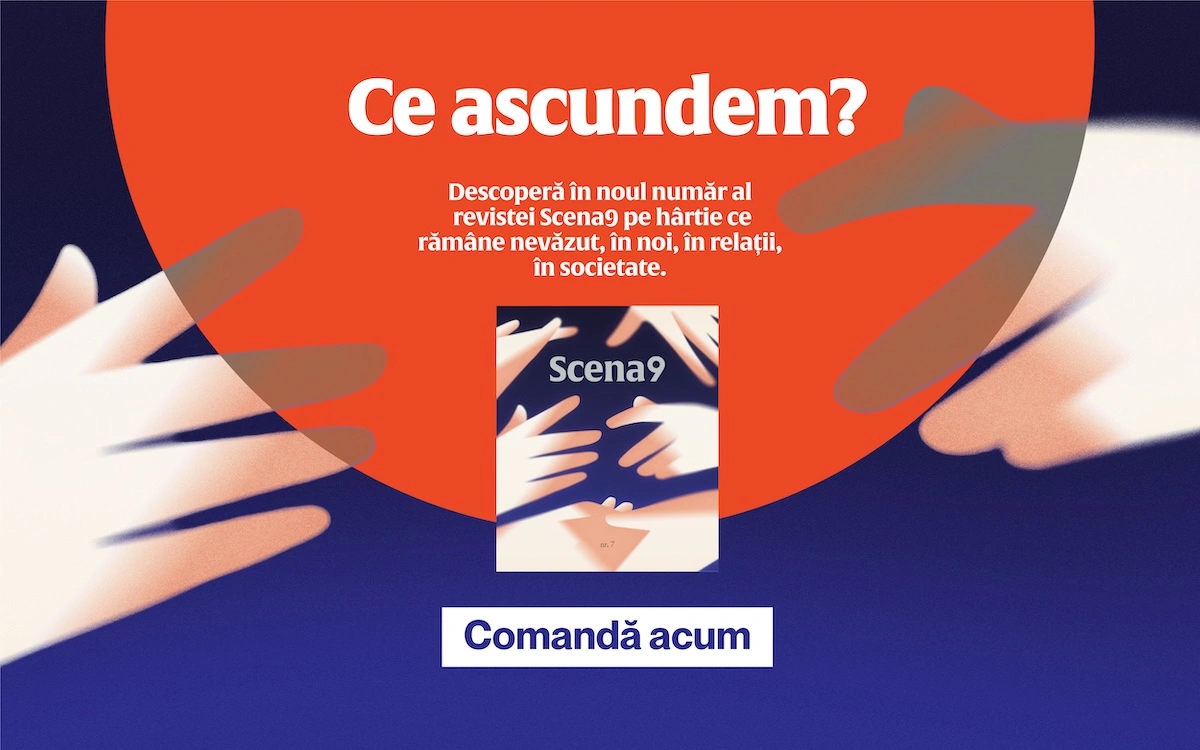In his book Măiastra: A History of Romanian Sculpture in Twenty-Four Parts, Timothy Stanley, a US-born writer and visual artist, plays with different episodes in the history of Romanian art and their reflection of the national history through the eyes of a fictive Romanian art historian, Igor Gyalakuthy. Timothy was invited to take part at this year's edition of Quote–Unquote, an artistic initiative devised by Irina Radu and Cristina Vasilescu that analyzes the uses of (public) speech in contemporary society through artistic and collaborative practices. On the 12th and the 13th of October of last year I took part in the Măiastra Open Lab, a creative writing workshop and a guided tour with the artist, organized by Quote–Unquote. In our walk we observed how different interventions in the public space marked elements such as national identity and shifts inside its bigger narrative with a funny element of randomness.
You initially studied literature but then you made a shift toward the art field and especially sculpture. How was this path for you and what are your influences?
In college, I studied English literature and, at the same time, was in the creative writing department. In my literature classes I was drawn to the modernists, James Joyce, Virginia Woolf etc. because I liked the way those writers experimented with the structures of their stories. They saw themselves as artists, the way we think of artists now, people who feel a responsibility to evolve the form. At the same time, I was becoming increasingly frustrated in my writing classes. I had some good professors, but in general I felt that we were being shepherded towards more conventional forms of writing, specifically the novel. Meanwhile I had friends studying studio art who looked like they were having all the fun. After school I got a job as an assistant in a sculpture workshop and that was that.
Initially it was Minimalism that captured my imagination the most. As someone new to art, it was the movement I understood the least, so it was the art I spent the most time trying to decipher. It’s this puzzle-like quality, I think, the sense of things below the surface, that thrills me most about art. In terms of influence, I landed on the post-Minimalists, artists who reintroduced humanity into a movement at risk of drifting into boring philosophy. Recently, I’ve been thinking about Eva Hesse a lot, and I’m reading through her personal diary now. My last few sculptures look a bit like hers.
How did you become familiar with Romania and its modern cultural history?
I spent a few months in Bucharest in 2014, mostly just walking around the city. At the time I was starting to experiment with art writing as a medium for telling stories. I was curious about a few of the public statues I'd see on my walks, and about the histories they told. I wrote a few short pieces about some of my favorite monuments, and these “sketches” inspired the first few chapters of Măiastra.
Once I committed to this project, I realized that the main challenge would be making my narrator, Igor, a convincing authority on Romanian sculpture, which, after forty years teaching the subject, he would certainly be. This meant lots and lots of research. As a result of Romania’s post-WWII history, finding reliable sources of information on the subject is challenging. Fortunately this is changing, thanks to the work of a few smart and dedicated Romanian scholars and artists.
The works that are discussed in your book are quite eclectic choices.
I think the thing that drew me in about Romanian public sculpture is that there are so many different styles layered on top of one another. The bust of Corneliu Coposu on Strada Batiştei, which we visited on the tour, is about as different a style of sculpture from, say, the Caragiale statue by Baraschi, or the Modura bronze in Bellu, as could be (or the other Coposu busts around town, for that matter), and yet all of them represent to me a distinctly Romanian style. Romanian art is as chimeric as its history, and that’s why I chose the chimera as the central metaphor for Măiastra, and the reason I built the novel chimerically, so to speak, different styles and subjects stuck onto one another. I wanted the style of the book to match the style of the art, if that makes sense, to have the experience of reading it somehow mimic the experience of seeing and learning about Romanian art.
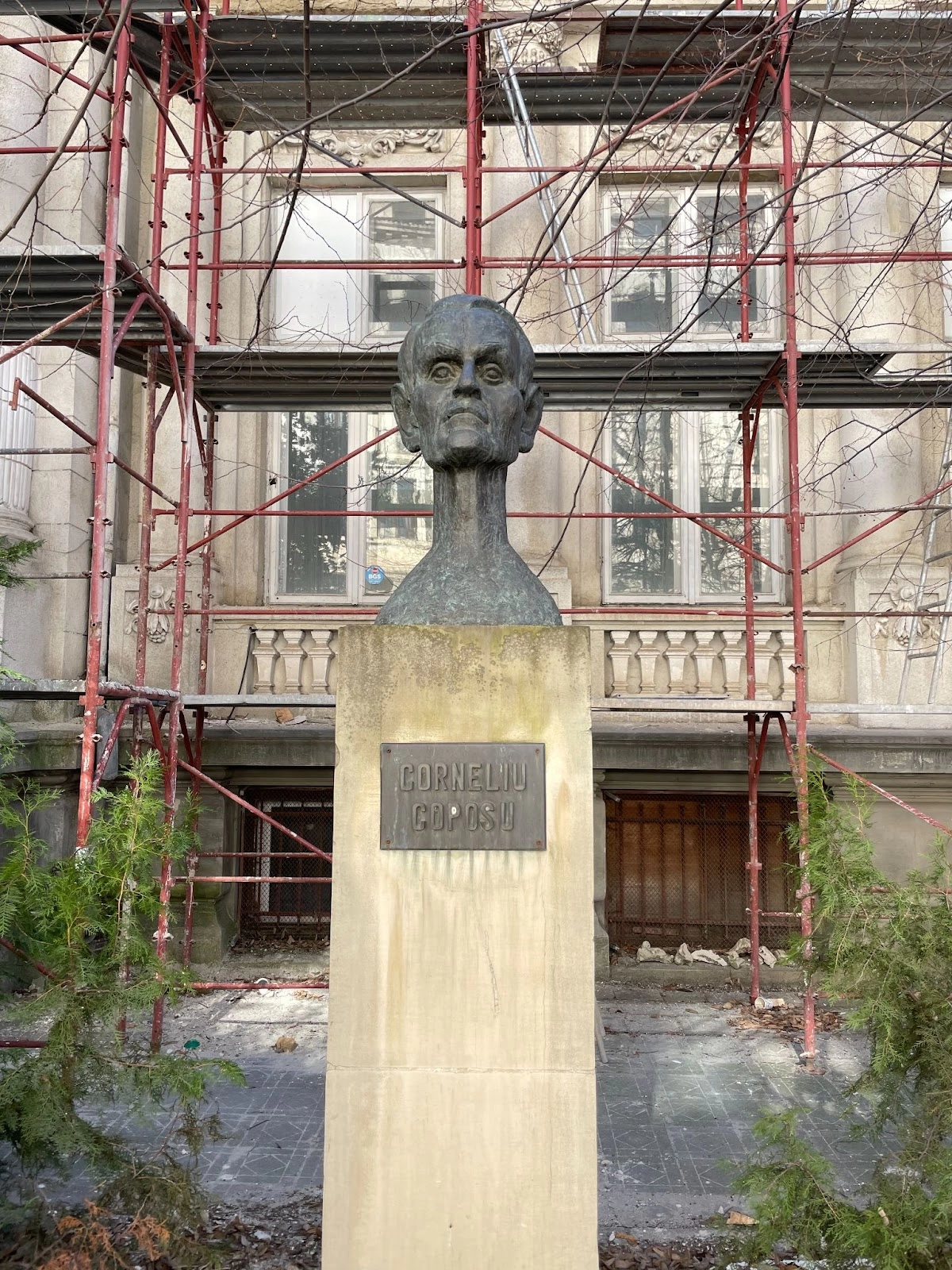
Tell us about some oddities that you encountered in your search for public monuments.
Honestly, most of my favorite public sculptures in Bucharest are in Bellu Cemetery. I've spent a lot of time in that graveyard, and I think it's probably the best place to see Romanian sculpture in the city. There are so many great monuments and stories in Bellu, but if I had to pick one that I love it'd be the tomb of Sophia Mavrodin by Constantin Bălăcescu. Sophia was a young alpinist in the late 19th century who fell from a cliff and died after being attacked by an eagle who was protecting her young. In his grief, her father erected a monument to his daughter that is, I swear, a scaled-down replica of the peak she fell from, made from pieces of the actual cliff, which he'd had laborers disassemble and bring, stone by stone, to Bucharest. Sophia is portrayed as a marble angel ascending the mountain, and the part that gets me is that her father also chose to memorialize the eagle, which he told Bălăcescu to cast in bronze and place atop the peak. There is a relationship to death that comes across in a place like Bellu. I don't know if it's 19th century Romanian, or just not common to anywhere I'm from, but it is intriguing and inspiring to me.
An important aspect in Măiastra is this make-believe of the book being written by an art historian and even an acquaintance of the artists mentioned. Also the way the information is mixed in the volume sometimes trick you to believe that they are written by an insider to a foreign audience, but at other times it seems written completely from the outside.
Definitely, the ambiguity was important to me, but working this way raised some questions I had to address. One example: it occurred to me that I was unlikely to have the same taste in art as an eighty-five-year-old Romanian art historian with dementia. I saw Măiastra as a way for me to express my ideas about sculpture, but I also needed moments when Igor and I disagreed, moments that made Măiastra truly fictional. The weird thing, though, was that the more I researched art that I thought he'd love (and I didn't), or spent time maligning work I thought he'd hate (and I actually liked), the more I found myself agreeing with him. This definitely had an effect on the sculpture I make.
This sensation persisted in the guided tour that you did for Quote–Unquote. There was a very sympathetical moment when you mentioned an information that is familiar to an insider, to almost every cultured Romanian - the death of Nicolae Labiș. Moments like those existed between others when you seem to focus on things that can seem fundamental in the modern history of our country but are mostly unknown even though they can seem like basic information to a foreigner.
Thanks, it was so nice to have you there. Yes, Labiș interests me, such a grim and grisly story for Romanians to have learned in school! Still, it's clear why the account of his death has captivated minds for nearly seventy years. The romance of the young, rebellious poet, the conspiratorial Securitate involvement, it's a perfect anecdote for describing the times, and for underlining a consistent intellectual and artistic resistance to the regime throughout.
But I ended with the tour with Labiș to make a point: that while most of our group knew the Labiș story with the precision of a Netflix true crime documentary, almost no one knew that just behind the station where Labiș died is a Jewish synagogue where twenty-three jews were burned alive by Romanian Legionnaires in 1941. I juxtapose these two events to highlight the dangers of allowing stories (which, to be fair, have helped to preserve many Romanian artifacts) to replace the solemn and crucial work of history. It doesn’t always feel like it, but we are the ones who decide what about our past we remember, and what we forget.
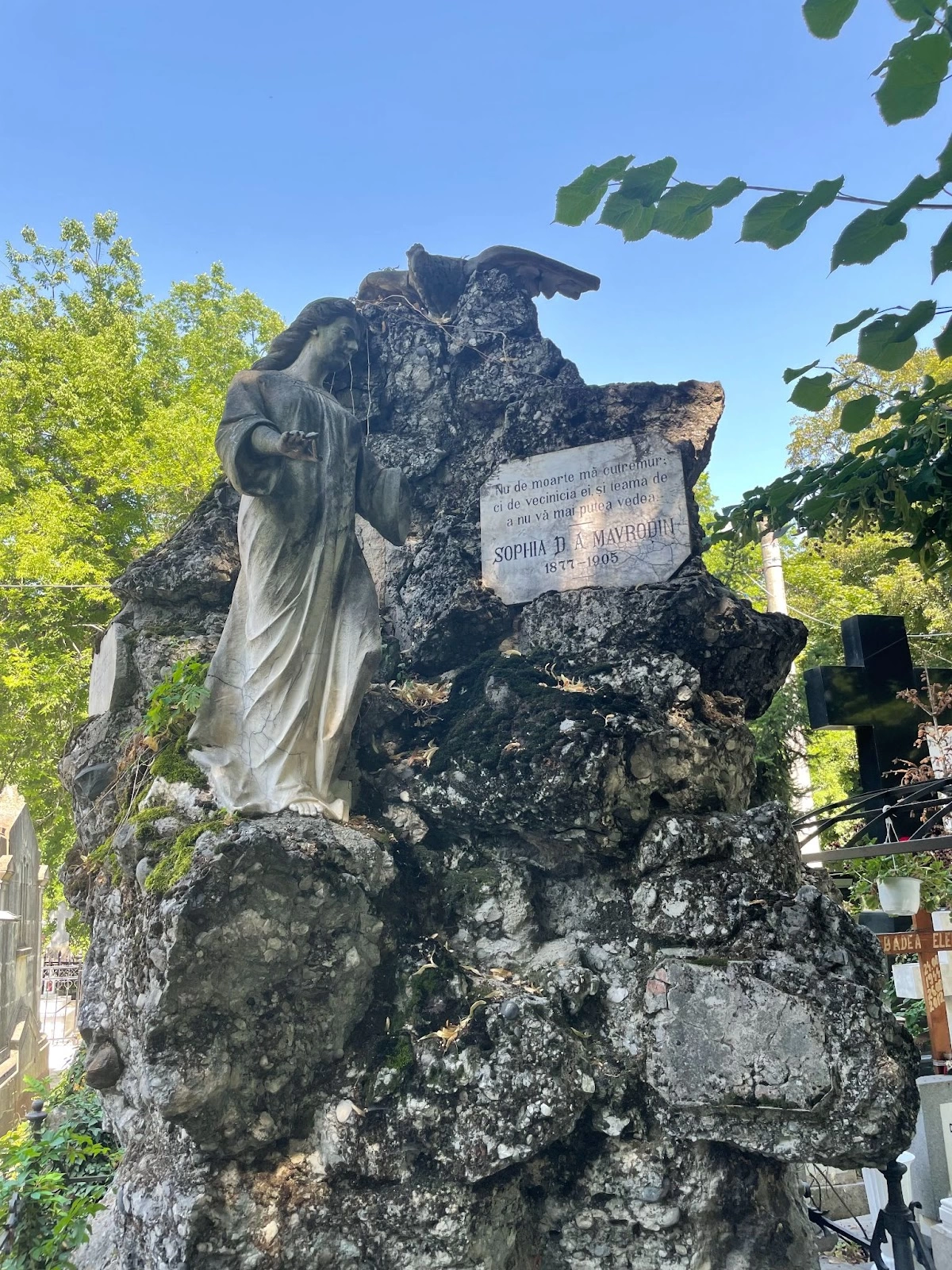
How was your book received by the audience?
Well, it's a small audience. We published Măiastra as a limited edition, just 250 copies, and it was marketed mainly as an art object, which I love. Still, I hoped the book would find a life of its own after its release. I was thrilled when Dispozitiv Books found it a few years ago and began selling it in Bucharest. I wrote Măiastra with my Romanian friends close to my mind, and it’s been special to me to have them read it. We’ve planned a few events around the book so far, like the tour and the creative writing workshop you came to, and I hope we can do more.
During my research I noticed how many contemporary artists here are deeply influenced by Romanian art history, a history that's been recovered in the years since the Revolution. Even as an outsider, or maybe especially as an outsider, I've felt a sense of appreciation from the Romanians who've read the book for contributing in whatever small way to the recovery effort. I’m flattering myself, I know, but I do believe that if taken with a grain of salt, Măiastra provides a vision of Romanian art history that feels modern and sincere.
Around your Măiastra there seems to be a very present, somewhere in the shadows, figure of Brâncuși. Will you develop more about him in the future?
Yes, Brâncuși was a problem for me, and for Igor, one that I think a lot of Romanian art historians have had to face as well: how to write about the man without reinforcing the idea that Romanian art begins and ends with him? The joke in Măiastra is that even though Igor is troubled by Brâncuși's deification by Romanian art scholars, and the shadows he casts over other worthy artists, he can't help but mention Brâncuși with the same obsessive frequency as the historians he admonishes for it. Don’t get me wrong, I love Brâncuși’s work, and this might be an area where Igor and I disagree, but I do take his point. In general, I see art as a community project, and I’m suspicious of artists who have, over the years, transformed into idols. Măiastra cautions readers to approach history with a reasonable amount of skepticism. The deconstruction of Brâncuși's mythology is important to Igor, and acts as a kind of armature for the book.
What is the second volume of Măiastra about?
Volume II sees Igor dancing a little closer to madness as he brings his readers up-to-date with Romanian art history. I don't want to give away too much, but there is a moment in one of the later chapters, probably the closest thing to a "climax" an art historical writing can have, and a new voice is introduced, one who has insights into Igor's personal life and unpublished work. There are also some new puzzles to solve, and a particularly petty and venomous takedown of the Romanian arts academy of the 1930s and ‘40s.
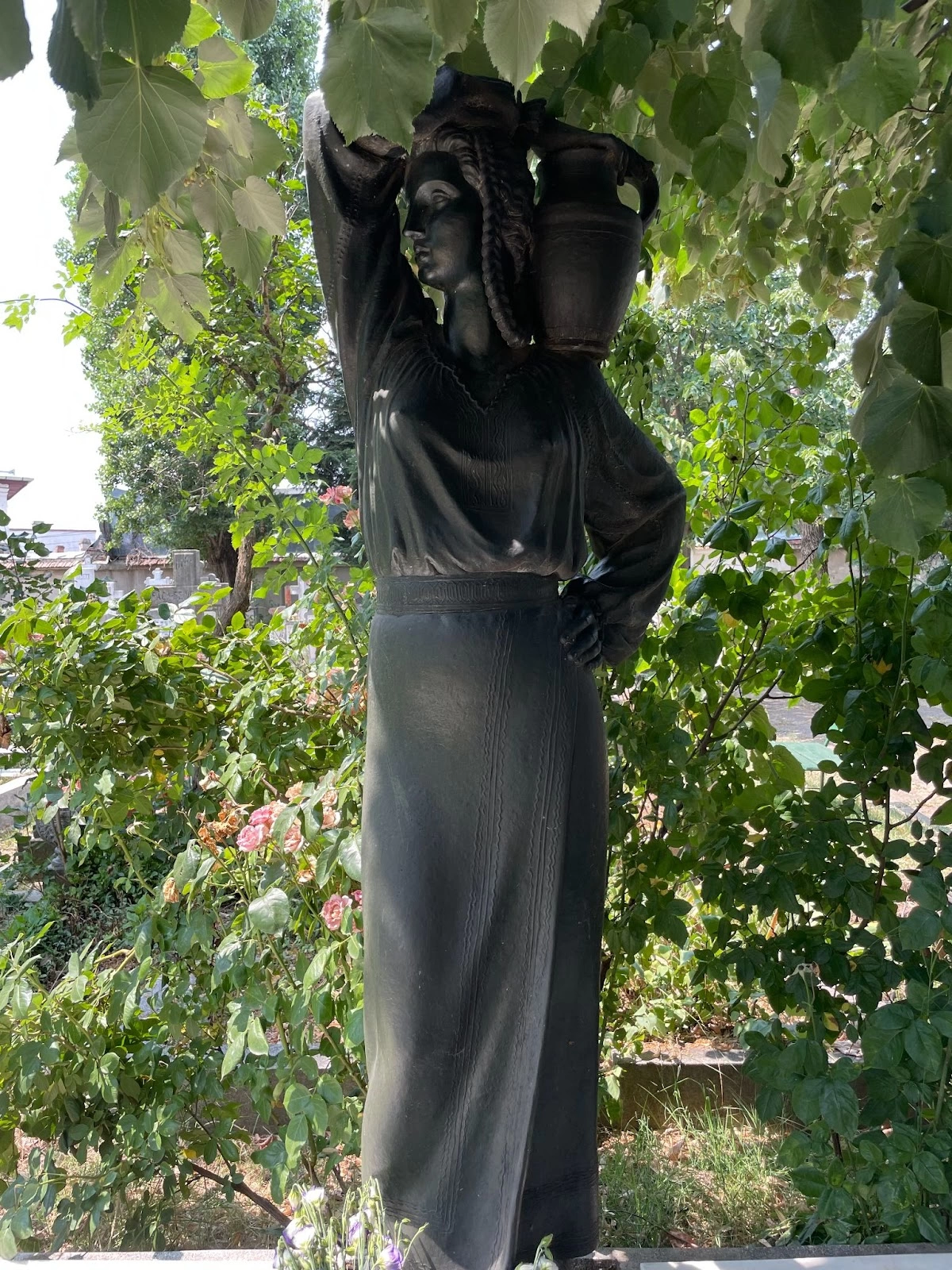
How do you feel in the Romanian context now after you worked on all of these?
Well, I'm not sure if this answers your question but I just recently became a legal Romanian resident! My wife Sabina and our daughter Raya are the reasons, of course, but I wouldn't have met and fallen in love with either of them if I weren't making research trips to Romania all these years. It's exciting to live in a city I spent so much time wondering about. It’s surreal and yet, a side effect of my research is that I’ve developed a familiarity with the art and architecture here that makes it feel more like home to me.
In the US you also have other projects. You did an exhibition and you are now working on another book.
Yes, this January I had a solo exhibition at the Crisp-Ellert Art Museum in St. Augustine, Florida. The show is the result of more than ten years of work, and will feature some older sculptures, some new works and a site-specific installation based on a new book I'm writing. The book is a sort of fictionalized memoir that explores the subject of time through the codebases of classic video games. It’s called Kathleen’s Game, and I’m really very excited about it. ☺
It's going to take me a long time to finish, I think, but that's what I like about it. Few things make me as happy as a project that's vast and deep, and demands years of research and many, many more long walks around the city thinking.
Photo credits: Timothy Stanley’s personal archive
Quote–Unquote: Practiced Places is an event series that intends to investigate bridges between public spaces and sculpture, personal premises and ways of relating towards the public sphere. The program probes, through a series of texts, tours and an experimental writing workshop, the artistic and social valences of the Bucharest public space, of Romanian monumentality and sculpture in the local collective imaginary and generates tools for their decoding or reconfiguration. The artistic coordinates of the project branch out the public space, draw new levels of interaction and generate new forms of collectivity, be it temporary. The first iteration took place between Sept-Nov 2022 in Bucharest and was co-financed by the Municipal Council of Bucharest through ARCUB, as part of the București afectiv Programme 2022.
Quote—Unquote is a long-term interdisciplinary and collaborative research platform which explores the mechanisms, uses and effects of (public) speech and language in contemporary society, through artistic practice and its intersections with other fields of activity. Quote—Unquote follows and provokes the juxtaposition of various practices in order to create new productions and an understanding of the event in itself as a process of transformation and co-creation.
The platform is devised, articulated and curated by Irina Radu and Cristina Vasilescu.
